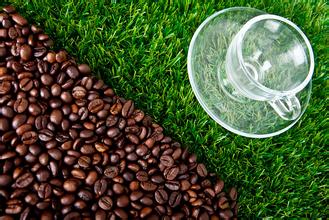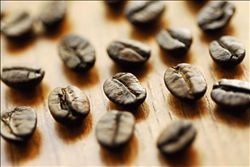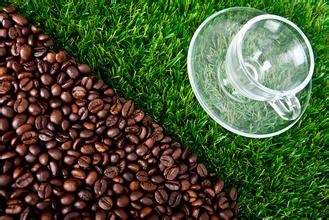Introduction to the quality and taste of Coffee Manor name, Origin and Flavor description in Cuba
Introduction to Cuban Coffee
There are nickel, cobalt, manganese, chromium, iron and copper with mining value. Among them, nickel reserves are about 6.6 million tons, accounting for 40.27% of the world's total reserves. Manganese reserves of about 7 million tons; chromium reserves are also abundant; iron ore reserves of about 3.5 billion tons, mainly distributed in Mount Nippe and Mount Palakoa, is one of the largest reserves in the world; almost all the mountains of Cuba contain copper deposits; Pine Island has tungsten deposits and produces marble. In addition to Cuba, it also includes more than 1600 surrounding islands of different sizes. The islands are made up of five islands: Savannah, Camag ü ey, Colorados, Queen's Garden and Canareos. Youth Island (also known as Pine Island), located in Batahuano Bay, is the only larger island along the coast. The total length of the coastline is 6073 kilometers. Most of the island of Cuba is flat, with mountains accounting for only 1x4 of the total area. There are three major mountains in the country: the Guaniganico Mountains, the Eskambria Mountains and the Maestra Mountains (the highest mountain range in Cuba, of which Mount Turchino is 1974 meters above sea level, the highest peak in Cuba).
In Cuba, most of the coffee beans are picked by hand. Coffee beans are picked about every half a month during the ripening period. During or after picking, coffee beans are classified and those immature and bad beans are removed to ensure the quality of the coffee. Cubans usually deal with coffee beans in two ways-tanning and washing. Tanning is the simplest, cheapest and most traditional way to treat coffee, which is to let the coffee fruit dry in the sun but not ferment. The general drying time is about four weeks. The washing rule makes the aroma of the fruit more into the coffee beans, thus adding a coarse fruit aroma to the coffee.
At present, Crystal Mountain Coffee is very precious. This is mainly for two reasons. The first reason is the economic sanctions imposed by the United States against Cuba and the non-opening up of Cuban imports. The second reason is that at present, Cuban coffee beans are mostly acquired by the French and Japanese markets, especially Japan, so it is difficult to buy coffee beans directly from Cuba. In spite of this, the status of Cuban coffee in the hearts of global coffee lovers can still be compared with Jamaican Blue Mountain Coffee. In 1748, coffee was introduced from Domiga to Cuba, and Cuba has been growing coffee ever since. With fertile land, humid climate and abundant Rain Water, Cuba can be called a natural treasure land for coffee cultivation. The suitable natural conditions provide a favorable natural environment for the growth of coffee trees, and coffee is well planted and developed here. In Cuba, the cultivation of coffee is regulated by the state. The best coffee growing area in Cuba is located in the Central Mountains. Because this area not only grows coffee, but also produces quartz, crystal and other precious minerals, it is also known as Crystal Mountain. At present, Crystal Mountain Coffee is synonymous with top Cuban coffee. One of the remarkable features of Crystal Mountain Coffee is that the particles are large and the color of coffee beans is bright green.

Important Notice :
前街咖啡 FrontStreet Coffee has moved to new addredd:
FrontStreet Coffee Address: 315,Donghua East Road,GuangZhou
Tel:020 38364473
- Prev

What kind of characteristics does Ecuador coffee beans belong to? Flavor description Processing method Quality introduction
On November 26, 2006, Correa, the candidate of the Sovereign Fatherland Movement, was elected president in the second round of the presidential election and took office on January 15, 2007. After taking office, he pushed for the convening of a constituent assembly. On April 15, 2007, Ecuador decided to convene a constituent assembly with 81.72% support. September, Ecuador holds constitution
- Next

What is the difference in flavor between sunny Sidamo coffee and water-washed Yega Chuefei?
From the bean shape, this bean is a typical Ethiopian, small grain, the size is not very uniform, the color is the characteristic of typical sun treatment, so it is specially compared with Harald. Sun Sidharma wbr Red Cherry Project (OCR) beans are similar in size and fresher in color (indeed, Harald is 11 years old, Sidamo is when
Related
- Detailed explanation of Jadeite planting Land in Panamanian Jadeite Manor introduction to the grading system of Jadeite competitive bidding, Red bid, Green bid and Rose Summer
- Story of Coffee planting in Brenka region of Costa Rica Stonehenge Manor anaerobic heavy honey treatment of flavor mouth
- What's on the barrel of Blue Mountain Coffee beans?
- Can American coffee also pull flowers? How to use hot American style to pull out a good-looking pattern?
- Can you make a cold extract with coffee beans? What is the right proportion for cold-extracted coffee formula?
- Indonesian PWN Gold Mandrine Coffee Origin Features Flavor How to Chong? Mandolin coffee is American.
- A brief introduction to the flavor characteristics of Brazilian yellow bourbon coffee beans
- What is the effect of different water quality on the flavor of cold-extracted coffee? What kind of water is best for brewing coffee?
- Why do you think of Rose Summer whenever you mention Panamanian coffee?
- Introduction to the characteristics of authentic blue mountain coffee bean producing areas? What is the CIB Coffee Authority in Jamaica?

